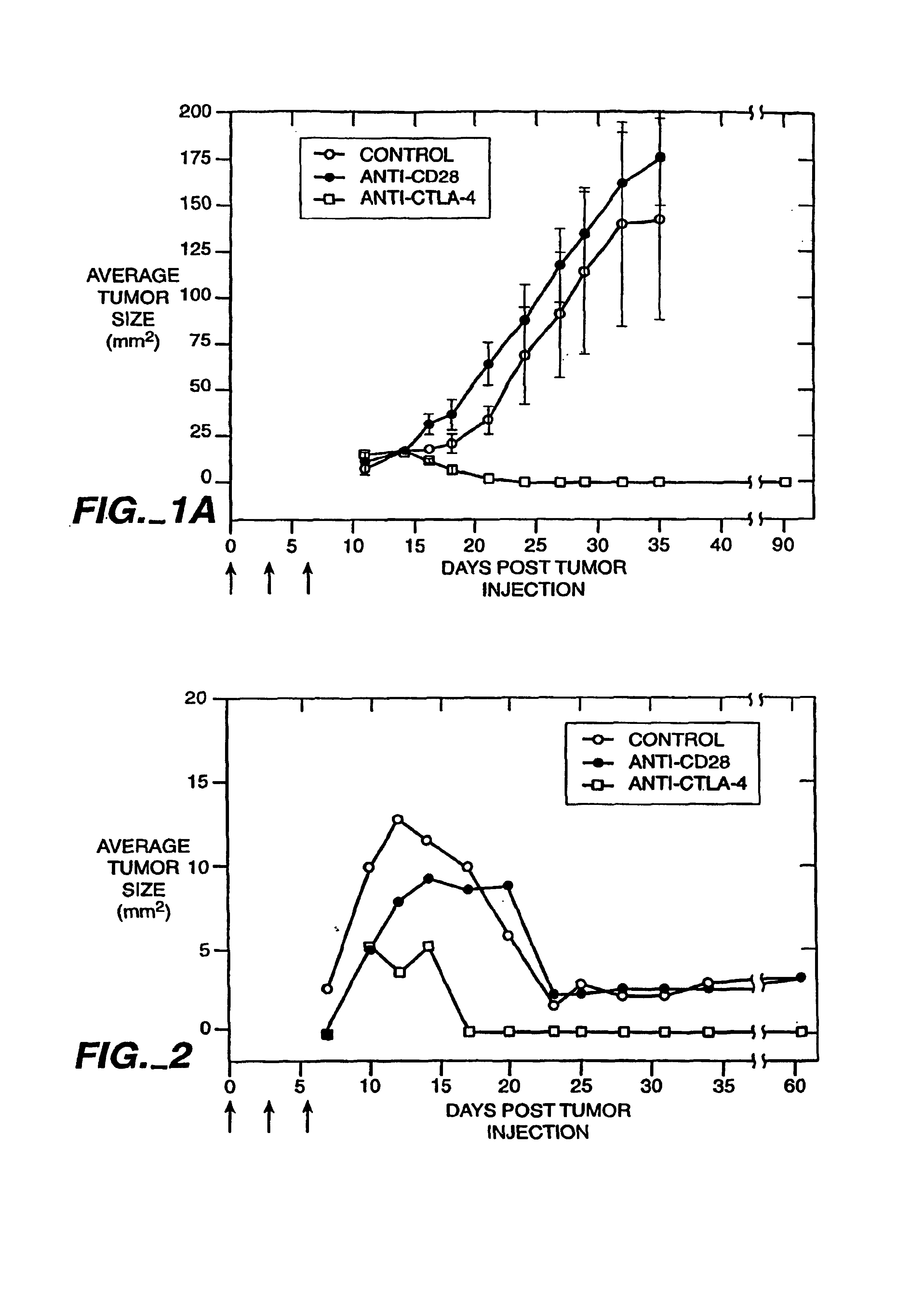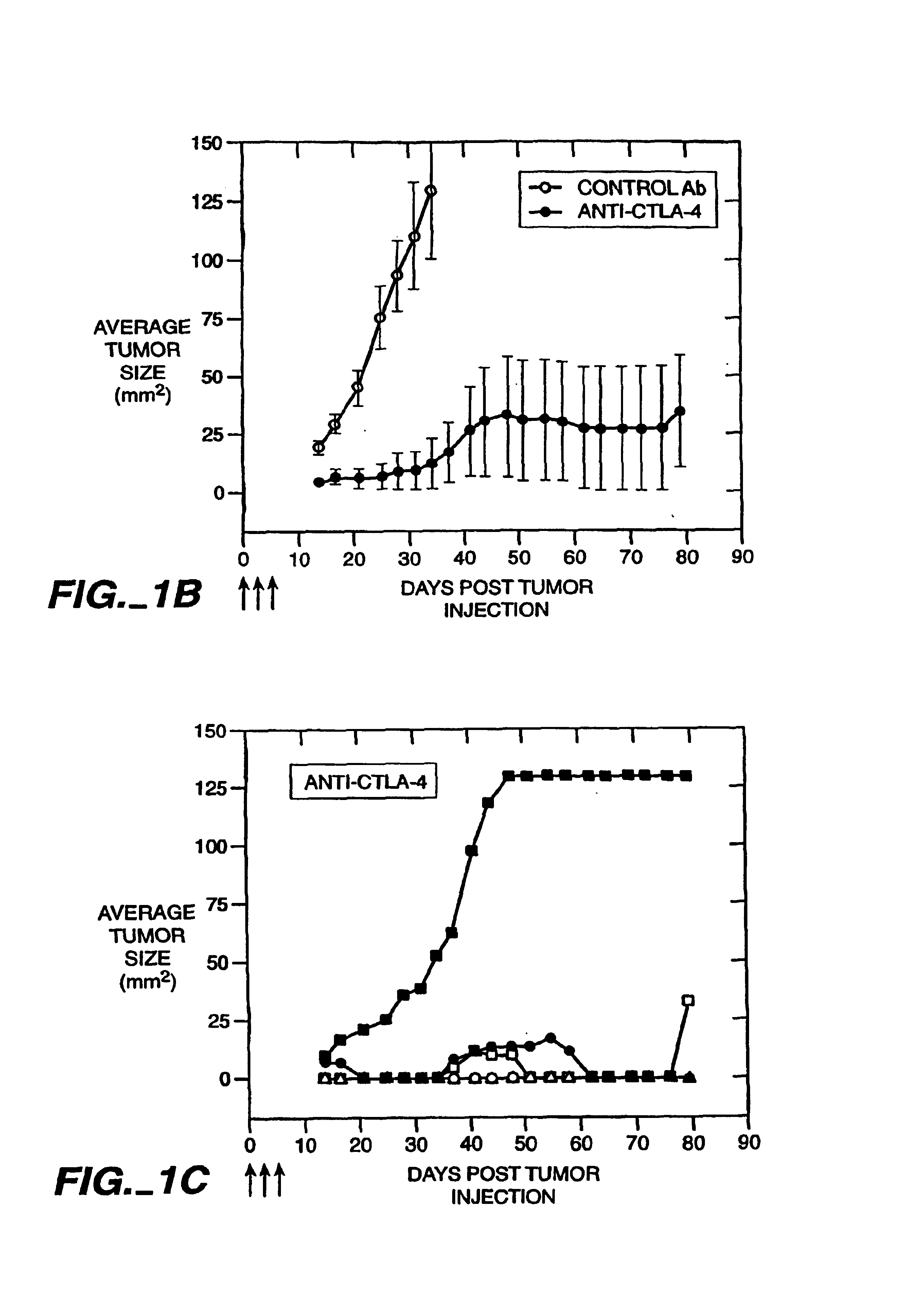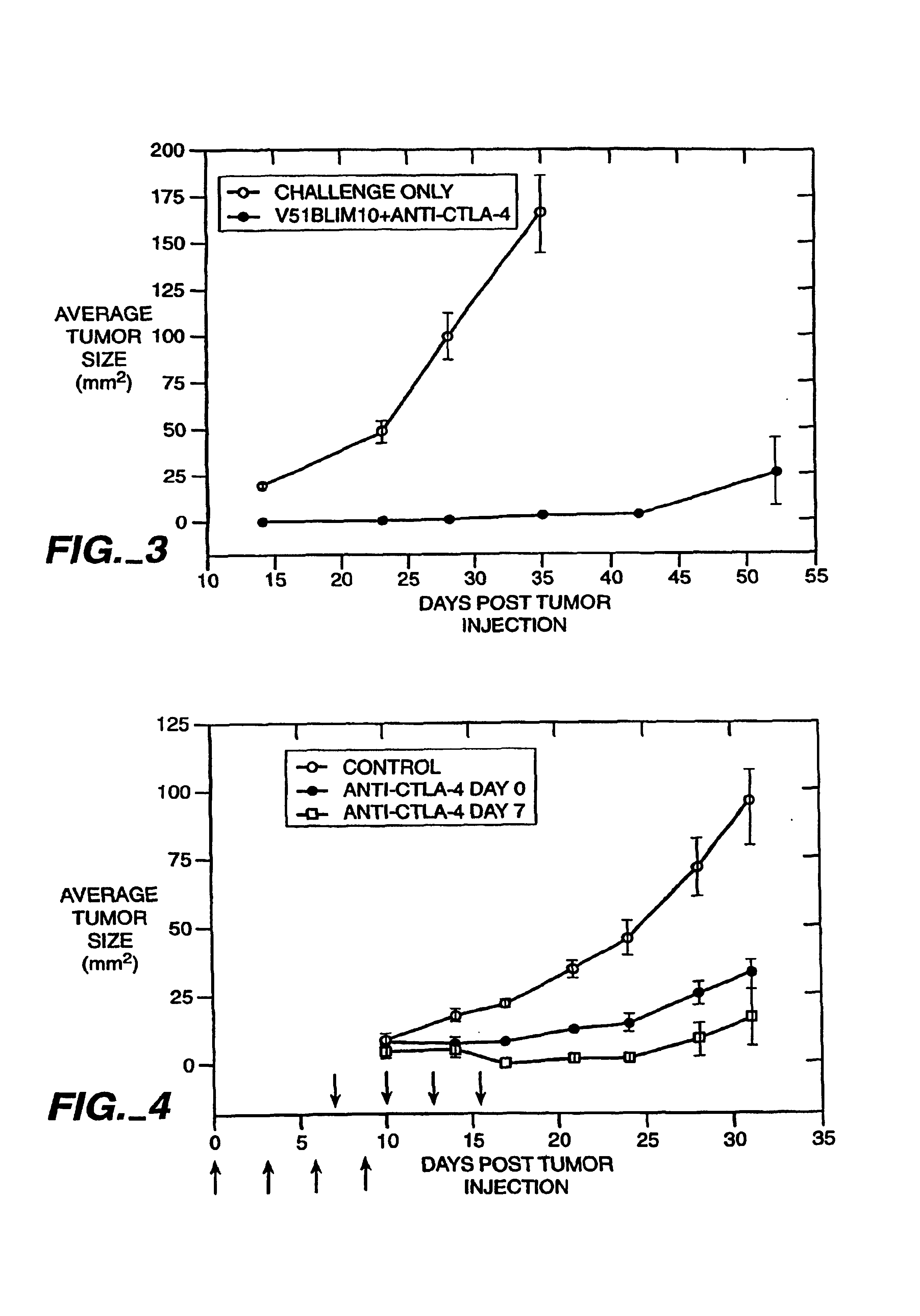Blockade of T lymphocyte down-regulation associated with CTLA-4 signaling
a t lymphocyte and signaling technology, applied in the direction of peptides, drug compositions, immunological disorders, etc., can solve the problem of insufficient or non-reactivity of the host's immune system to infected or transformed cells, and achieve the effect of increasing the activation of t cells
- Summary
- Abstract
- Description
- Claims
- Application Information
AI Technical Summary
Benefits of technology
Problems solved by technology
Method used
Image
Examples
example 1
Generation of Monoclonal Antibodies Reactive With Mouse CTLA-4
a) Preparation of a Mouse CTLA-4 Immunogen
[0077]A fusion protein comprising the extracellular portions of the mouse CTLA-4 gene and the constant region of human IgGI, termed mCTLA4-Hg1, was obtained from Drs. P. Lane and K. Karjalainen (Baser Institute for Immunology, Basel, Switzerland). An expression vector capable of expressing the mCTLA4-Hg 1 protein was constructed as described [Lane, et al. Immunol. 80:56 (1993)]. Briefly, sequences encoding the extracellular portions of the mouse CTLA-4 molecule were generated using PCR. The following primer pair was used to amplify these CTLA-4 sequences from a plasmid containing mouse CTLA-4 sequences: 5′-TTACTCTACTCCCTGAGGAGCTCAGCACATTTGCC-3′(SEQ ID NO:1) and 5′-TATACTTACCAGAATCCG GGCATGGTTCTGGATCA-3′(SEQ ID NO:2). The amplified CTLA-4 sequences were then inserted into an expression vector that permits the insertion of a gene of interest upstream of sequences encoding the hinge,...
example 2
[0102]Anti-CTLA-4 Monoclonal Antibodies Cause Rejection of V51BLim10 Tumors in Mice
[0103]The anti-mouse CTLA-4 monoclonal antibody, 9H10, was used to treat mice that received injections of a colon carcinoma cell line. The injection of the 9H10 mAb along with V51BLim10 tumor cells resulted in the complete rejection of the tumor cells in the experimental animals. In contrast, mice injected with an anti-CD28 mAb and V51Blim10 cells or mice injected with V51BLim10 cells alone both developed tumors which exhibited a steady increase in average tumor size over a period of four weeks.
[0104]a) Generation of the V51BLim10 Cell Line The V51BLim10 cell line was generated by transfection of the SR1neo expression vector into the 51BLim10 cell line. The 51Blim cell line is a colon carcinoma cell line that provides an accurate animal model for colon cancer metastasis in humans. Bresalier, et al., Cancer Res. 47:1398 (1987).
[0105]The V51BLim10 cell line used in the present experiments was generated ...
example 3
Anti-CTLA-4 Monoclonal Antibodies Act as an Adjuvant
a) Preparation of Immunogen
[0120]DNP-KLH was obtained from Calbiochem (san Diego, Calif.) and was suspended in deionized water at 1 mg / ml, 100 ng / ml or 10 pg / ml. One ml of Freund's Complete Adjuvant (Difco, Mich.) was added to each 1 ml of the DNP-KLH preparations. These were then emulsified in two 5 ml syringes connected by a double-ended luer lock connector by rapid passage through the luer lock, as described in Current Protocols in Immunology, Colligan et al., eds., section 2.4.
[0121]30 minutes prior to injection of the immunogen, C57B1 / 6 mice of 4-6 weeks in age were injected in the peritoneum using a 23 gauge syringe with 200 μg of non-specific control hamster antibody or with 200 μg of anti-CTLA-4 antibody 9H10 (both in 200 μl total volume). The mice were subsequently injected subcutaneously using a 21 gauge syringe at two sites on the back, with 200 μl of the immunogen in the form described above, giving a dose of 100 μg, 10...
PUM
| Property | Measurement | Unit |
|---|---|---|
| pore size | aaaaa | aaaaa |
| pH | aaaaa | aaaaa |
| flow rate | aaaaa | aaaaa |
Abstract
Description
Claims
Application Information
 Login to View More
Login to View More - R&D
- Intellectual Property
- Life Sciences
- Materials
- Tech Scout
- Unparalleled Data Quality
- Higher Quality Content
- 60% Fewer Hallucinations
Browse by: Latest US Patents, China's latest patents, Technical Efficacy Thesaurus, Application Domain, Technology Topic, Popular Technical Reports.
© 2025 PatSnap. All rights reserved.Legal|Privacy policy|Modern Slavery Act Transparency Statement|Sitemap|About US| Contact US: help@patsnap.com



